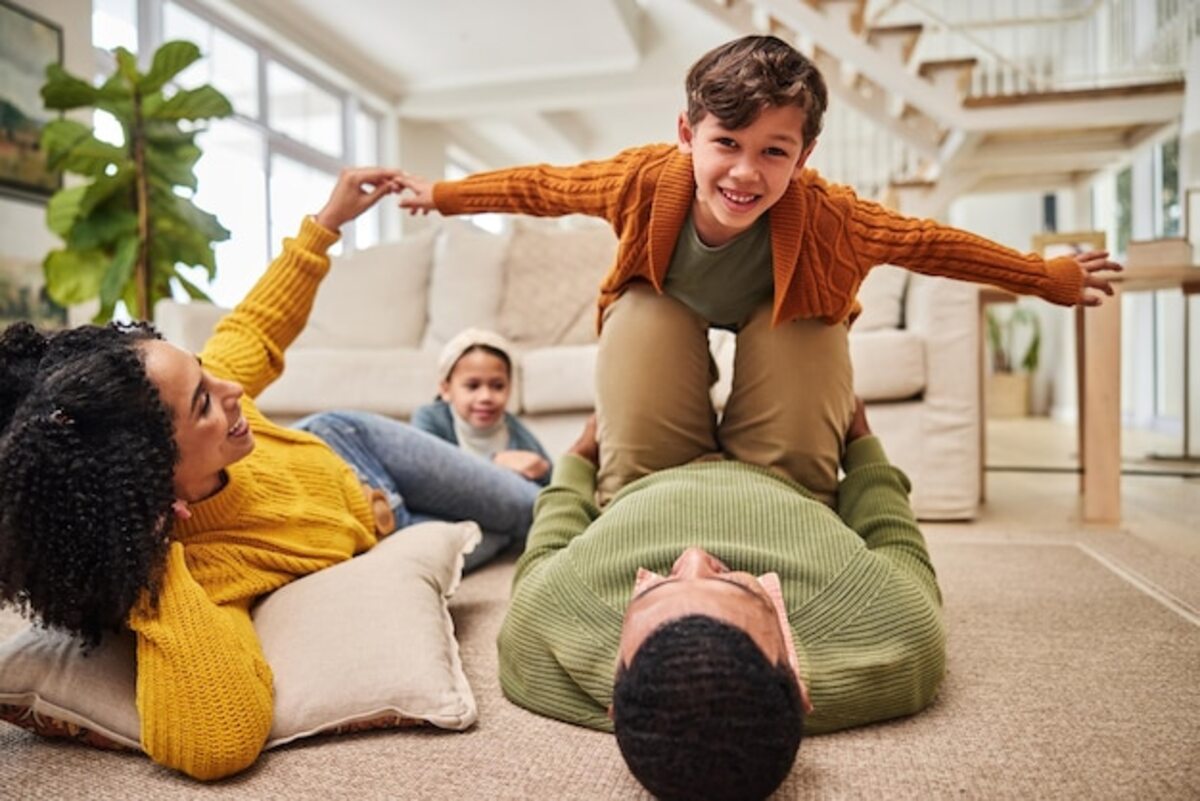Create a home that fosters family emotional resilience.

Create a home that fosters family emotional resilience. In a world full of changes and challenges, it is vital for our families to find a safe refuge where they can grow and heal together. Learning to cultivate an environment that reinforces emotional resilience not only strengthens family ties but also prepares all its members to face adversity with courage and optimism. Discover how to transform your home into a space that nurtures the emotional well-being of each individual.
1. The importance of a safe space: What does it really mean to feel safe at home?
Creating a home that fosters emotional resilience begins with establishing a safe space. Feeling safe at home means much more than the simple absence of physical threats; it involves cultivating an environment where every family member feels valued and protected, both emotionally and psychologically. This translates into promoting open communication, where everyone can express their thoughts and feelings without fear of being judged. By providing this type of environment, not only is individual well-being promoted, but family bonds are also strengthened, allowing each person to feel supported in difficult times.
A safe home is one that allows each member to explore their identity and emotions without restrictions. This type of space should be designed to invite reflection and dialogue, fostering positive interactions among family members. Additionally, it is essential to establish family routines and rituals that reinforce the sense of belonging and security, creating shared memories that act as emotional anchors in challenging times. When a home provides this comprehensive sense of security, its members are better equipped to face external adversities with confidence and resilience, knowing that they always have a refuge to return to.
2. Designing connection areas: How to create family corners that encourage communication.
Designing connection areas in the home is essential for fostering communication and strengthening family bonds. Spaces such as reading nooks, game tables, or relaxation areas invite interaction and dialogue. When creating these spaces, consider the arrangement of furniture and lighting; a cozy and comfortable environment can encourage family members to spend time together, sharing their thoughts and emotions. By providing a specific place where they can gather without external distractions, open communication is facilitated, allowing for the exploration of feelings, conflict resolution, and celebration of achievements.
Additionally, it is essential that each family member feels their voice is valued in those designated corners. Including personal elements in these spaces, such as family photos or meaningful objects, can help establish a sense of belonging and emotional connection. By involving everyone in the design and use of these areas, a collaborative environment is promoted that reinforces mutual trust. In this way, not only is a physical refuge created but also an emotional one, where families can support each other in difficult times and enjoy happy moments together.
3. The power of art in family: Creative expressions as a tool for emotional healing.
Art has a unique ability to connect people and facilitate the expression of deep emotions. In the family context, engaging in creative activities such as painting, crafting, or making music together not only fosters cohesion but also allows each member to express their feelings in a safe and constructive way. These shared experiences can help both children and adults process difficult situations, as the act of creating becomes a form of communication beyond words. Through art, families can explore their collective history, share aspirations, and confront their fears, strengthening their emotional bond.
Additionally, art provides a space for personal reflection and self-awareness. By allowing each family member to explore their creativity without judgment or expectations, an environment is created where everyone feels valued and heard. This can be especially beneficial during times of crisis or significant changes, as working together on artistic projects can serve as an emotional outlet and a means to find joint solutions to problems. Thus, by integrating creative expressions into the daily life of the home, families not only strengthen their emotional bonds but also build effective tools to face emotional challenges with resilience and optimism.
4. Quality moments: Strategies for establishing meaningful family routines.
Establishing meaningful family routines is one of the most effective strategies for fostering quality moments at home. These routines do not have to be complex; they can include anything from weekly dinners together to game nights or outdoor activities. The important thing is the consistency and intention behind these interactions. By creating regular spaces where each family member feels heard and valued, emotional bridges are built that strengthen bonds and allow everyone to express their feelings and experiences, thereby fostering an environment conducive to the development of emotional resilience.
Additionally, it is essential to adapt these routines to the interests and needs of all family members. Active inclusion not only generates a sense of belonging but also allows each person to contribute their unique perspective. For example, if a child shows interest in art, an afternoon can be dedicated to doing crafts together, while another day could be reserved for watching movies or reading books as a group. These shared experiences create lasting memories and teach important skills like empathy and teamwork. At the end of the day, what truly matters are the moments lived together, as it is those instances that nurture the emotional strength needed to face any adversity.
5. Spaces for introspection: The importance of having quiet places at home.
Spaces for introspection are essential in any home that seeks to foster family emotional resilience. These quiet places, whether a reading nook, a small meditation room, or even the garden, provide each family member with a personal refuge where they can reflect on their thoughts and emotions. The ability to retreat to a serene environment allows for the reduction of accumulated stress and facilitates connection with oneself, which is fundamental for processing difficult experiences and finding mental clarity in times of confusion. Furthermore, having spaces dedicated to introspection promotes a family culture that values individual emotional well-being. Family members can learn to recognize their own emotional needs and communicate them effectively with one another. This type of environment not only strengthens family bonds but also teaches them to face adversity together with empathy and understanding. In summary, creating quiet areas in the home not only provides inner peace but also lays the groundwork for open and effective communication in times of crisis.
6. Foster empathy and mutual support: Family activities that build resilience.
Fostering empathy and mutual support within the family is essential for building emotional resilience. Family activities, such as game nights or shared dinners, not only create moments of fun but also provide opportunities for each member to express their feelings and emotions. By taking the time to actively listen to others and validate their experiences, a culture of understanding and respect is developed. This strengthens family bonds and allows each person to feel valued, which is crucial when challenges arise.
Additionally, getting involved in community activities or group solidarity projects can be an effective way to teach children the importance of mutual support and empathy towards others. By working together for a common cause, families not only reinforce their internal unity but also learn to value differences and face external adversities with a collaborative approach. These types of shared experiences are fundamental for cultivating an environment where everyone feels safe to express their emotions and seek help when needed, thereby establishing a solid foundation for family emotional resilience.
7. The magic of family traditions: How customs strengthen emotional bonds.
Family traditions are the thread that weaves shared memories and experiences, creating a sense of belonging and stability in the home. These customs, whether as simple as Sunday dinner or more elaborate rituals like annual celebrations, provide each family member with an opportunity to connect emotionally. By participating in these practices, the feeling of unity is reinforced and open communication is encouraged, allowing everyone to express their thoughts and emotions in a safe and welcoming environment. In this context, traditions are not only reminders of happy moments but also powerful tools for facing the challenges that life presents together.
Additionally, by conveying values and teachings through these customs, the emotional foundations of each family member are strengthened. Traditions act as a generational legacy that connects current members with their ancestors, reminding them of the struggles overcome and the lessons learned. This sense of continuity helps to build a strong family identity that can face difficult situations with greater resilience. Likewise, by facing adversities together during these shared rituals, an environment is cultivated where each person feels that their voice is valued and their well-being is prioritized. Therefore, integrating traditions into daily life not only fills the home with love and joy but also significantly contributes to the healthy emotional development of all its members.



